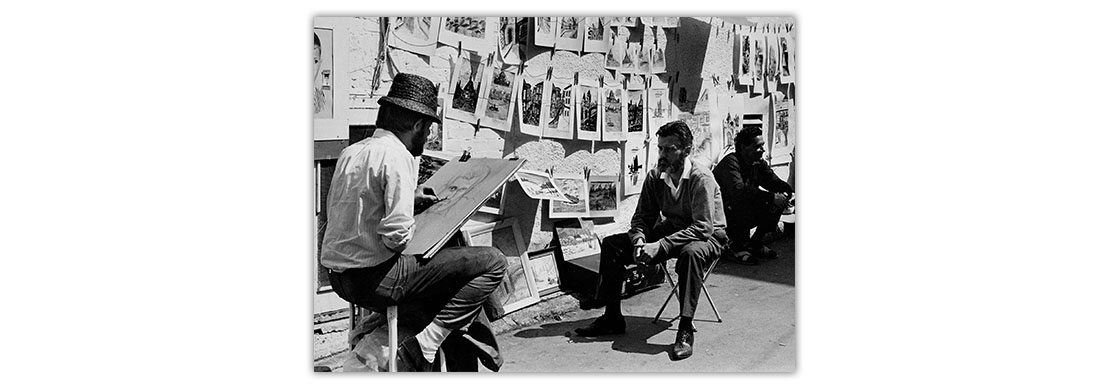Terry Mosher is a mischievous wag with an aptitude for tweaking noses. Best known as an editorial cartoonist, he is also an accomplished historian and effortless storyteller, with
52 books to his credit. At 78, he remains a work in progress.
Mosher has drawn for more than a half-century under the pen name Aislin. He began at the Montreal Star in 1967 before moving to the Montreal Gazette five years later. He still draws two cartoons a week for the Gazette, adding to the more than 14,000 over his career. He’s earned two National Newspaper Awards, a gold National Magazine Award and five individual prizes from the International Salon of Caricature.
Inducted into the Canadian Cartoonist Hall of Fame in 2012, he is president emeritus of the Association of Canadian Cartoonists and an Officer of the Order of Canada. He is also the youngest person to be inducted into the Canadian News Hall of Fame. He was 43.
But the legacy he wants most is to be remembered as a good dad, good grandfather and “pretty good husband.” He’d also like to be remembered as a “pretty daring cartoonist,” a reputation he secured long ago.

Courtesy of Terry Mosher. From Trudeau to Trudeau, p. 49.
When he started cartooning, there were two taboo subjects: sex and the Royal Family.
“I could never tolerate restrictions of that kind and saw my chance to push the envelope during a 1973 visit to Canada by the Queen and Prince Philip.”
Mosher drew the royal couple as a ventriloquist and puppet, after Prince Philip had filled in for the Queen at a speaking engagement. (He added a subtle touch to the Queen’s feet.)
Days later came a letter from the Queen’s press secretary, asking: “What was the point in yesterday’s editorial cartoon?” Mosher’s reply read in part: “The point employed in yesterday’s cartoon was a triple-zero Rapidograph pen.”
Twenty years later, Barbara McDougall, a cabinet minister, reacted angrily to an Aislin drawing of then Prime Minister Brian Mulroney:

Courtesy of Terry Mosher. From Trudeau to Trudeau, p. 95.
“We all know Aislin recognizes no limits and displays no judgment. I find it (the cartoon) not only personally offensive but frightening on behalf of all Canadians.”
Aislin was the first artist to have his work denounced in the House of Commons.
“Barbara McDougall had thought I had drawn him dead. As if the Gazette is going to print that drawing.”
To this day, he views that public rebuke as “the best day of my professional life.”
Mosher spent his early life in Ottawa, Toronto and Montréal before he quit high school to hitchhike across North America. After two years, he landed in Québec, where he drew portraits and caricatures of tourists in the streets and began signing his cartoons as Aislin – to distinguish them from his more serious artwork.

Mosher drew portraits and caricatures of tourists on Trésor Street in Québec between 1963 and 1967. Image courtesy of Terry Mosher
Travel broadened Mosher and gave him a greater understanding of the country’s two solitudes. He was comfortable living in Toronto, then in Montréal and then in Québec. “How good a preparation is that to be a political cartoonist in Canada, to be equally at home on rue Saint-Jean as on Queen Street in Toronto?” he says.
In Montréal, Mosher lived near the Forum. At age 12, in 1955, he witnessed the Richard Riot.
“I realized, wait a minute, some of these French people are pretty angry. And it’s not just hockey. They were pretty angry about things. And I think that was maybe the birth of me… having a real interest in what was going on in Quebec.”
Early in his career, he covered the 1972 Summit Series, travelling to Moscow. One of those images was chosen for the stamp honouring Mosher.

Aislin was one of the first editorial cartoonists to regularly get sports on the editorial page. “I thought, ‘I’m not just a political cartoonist. I can draw anything that people are talking about out there.’”
His favourite sports story involves an obscure rule from the early 1900s that allowed newspapers in major league cities to nominate a cartoonist for membership in the Baseball Writers’ Association of America.
He was accepted and, after a decade, got to vote on candidates nominated to the National Baseball Hall of Fame. Pitcher Fergie Jenkins became the first Canadian to be elected in 1991 – by a single vote. “I like to think it was mine!” Mosher says.

Courtesy of Terry Mosher. From Trudeau to Trudeau, p. 111.
How do politicians react to his depictions? “I think most clever politicians grin and bear it, but some really enjoy it.” Robert Bourassa, former Quebec premier, “loved the cartoons that were drawn of him – even some of the really tough ones.”
New stamp issue celebrates Canada’s wealth of talent in editorial cartooning
Available now